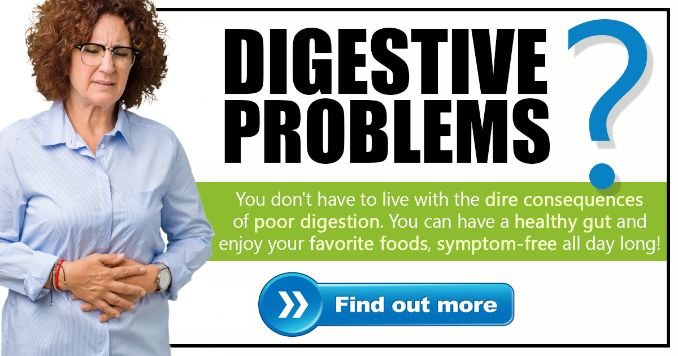You want to eat a healthy diet. As you go into the grocery store, you have every good intention of having only nourishing, wholesome foods in your house.
Then you get home and stare at your purchases. What happened? On your countertop are processed snacks, baked sweets, ready-made meals, high-sodium soups, and other items that you know are not very good for you.
It’s frustrating. Is there a way to avoid temptation and shop smart?
The Grocery Store is Set Up to Tempt You
Here's the good news: It's not all your fault. The food industry is conspiring to not only get you to buy more but to buy items that aren't healthy for you.
According to a recent report from the Center for Science in the Public Interest (CSPI), the placement of products can prompt people to purchase them. Indeed, the food industry pays handsomely to place products near the checkout counter, where temptation is high. These products usually include candy, gum, energy bars, chips, soda, and other sugary drinks.
After making a series of decisions throughout the store, you arrive at the checkout line with weakened willpower and are more likely to buy those unhealthy items. Stress, distraction, and fatigue all make you more vulnerable to this sort of temptation.
The CSPI has proposed that grocery stores be compelled to place more healthy items in the checkout line, but that's unlikely to happen anytime soon. Meanwhile, the store holds other temptations as well.
The food industry spends millions of dollars on research, package design, and advertising to get you to buy their products. Grocery stores, as well, use layout, displays, colors, and other elements of store design to get you to make impulse purchases because they are key to boosting the store's revenue.
In other words, when you step foot into the grocery store, you are entering a world where everything has been carefully thought-out and designed to get you to spend more money, often on foods and beverages that are less-than-ideal from a health perspective.
That means you need to arm yourself with tools you can use to resist temptation and stick to purchasing only those items you know will benefit your diet. Below are ten tips that will help make your next trip to the grocery store a healthy one.
 1. Plan Ahead
1. Plan Ahead
One of the best ways to avoid impulse purchases is to plan ahead. Start by determining what meals you will have in the coming week, then create a shopping list for the appropriate ingredients. Add any other staples you need, and vow to stick to your list no matter what.
Keep in mind that your list should contain wholesome foods from the main food groups, including the following:
- Fruits and vegetables
- Whole grains
- Lean meat and fish
- Poultry
- Beans
- Healthy fats like nuts, olive oil, and avocado
2. Consider Canned and Frozen Items
If you have a hard time using up fresh produce before it goes bad, consider canned and frozen items instead. Frozen fruits and vegetables, in particular, are convenient and healthy as they are naturally preserved yet contain just as many nutrients (often more) as their fresh counterparts.
Do stay away from canned fruits and vegetables that are packaged in sugary syrups or salty water. Look for those with no additional ingredients and with no sugar added. Choose frozen items that contain only the whole food with no extra sauces or preservatives.
3. Never Go Shopping When You’re Hungry
You probably already know this rule: If you go shopping when you’re hungry, you’re likely to buy more than you need, and to buy unhealthy, tempting foods.
It’s not always easy to schedule your shopping trips around your mealtimes, however. So, if you're headed out and you notice that you're a little hungry, have a healthy snack first. Choose half an apple, a serving of yogurt, a couple of whole-grain crackers, or some celery and peanut butter.
There’s another hidden benefit to this tactic: It will encourage you to buy healthier foods when you do go to the store. According to a recent study, people who ate an apple before grocery shopping were more likely to buy healthier foods. Indeed, those who ate an apple before shopping bought 28 percent more fruits and vegetables than those who ate a cookie and 25 percent more than those who ate nothing.
4. Shop the Perimeter of the Store First
Here’s a secret the grocery store doesn’t want you to know: the healthier, less processed (and often lower cost) foods are usually placed around the outer perimeter. That means you have to walk a little farther to get to them all, and the store is hoping to lure you into the inner aisles instead.
So, take a circle around the outer edges of the store first, getting all the fresh produce and dairy products that you need, then only go down the middle aisles that contain the things you need that are on your list.
5. Don’t Take the Kids Along
You may not always have a choice in this, but if you can, leave the kids at home when you go shopping. Research shows that their begging and pleading for the attractive products they see on the shelves can wear parents down, luring them into making unhealthy purchases.
If you need to take your kids with you, bring something along that they can play with while you’re shopping, and try to avoid those aisles that contain the more kid-attractive items.
6. Don’t Shop When You’re Tired or Stressed Out
Anytime your defenses are down, you’ll be more likely to make unhealthy choices. Stress drives you to desire high-fat, high-sugar foods, and fatigue can do the same. In a 2015 study, researchers found that stress was positively associated with uncontrolled eating and emotional eating.
Stress and sleep deprivation both alter hormone function, and the resulting changes can increase the body’s desire for fat- and sugar-filled foods.
You'll find it much easier to stick to your healthy shopping list if you're well-rested and calm when you go grocery shopping.
7. Consider Using the Pickup Service
If your schedule is packed and you have no option but to shop at the end of the day when you’re tired and stressed out, consider using the store’s pickup service. Place your order online, following your grocery list, and then call the number you’re given (or text) when you arrive in the parking lot.
Store staff will bring your groceries to you, and take your payment. You’ll never have to go into the store. No temptation, no impulse buying!
8. Study Up on Food and Nutrition Labels
Knowledge is power. Knowing how to properly read a food label can help you avoid foods that have extra sugar, oils, and other ingredients you’d rather avoid.
- Ignore the front label: Food manufacturers use the front labels to compel you to buy their products. This is where you’ll find attractive pictures and colors, along with words that may lead you to believe a food is healthier than it is. Ignore it and turn the package, can, or bottle over to read the back.
- Read the ingredients list: This is where you’ll find what’s really in the food. Keep in mind that the ingredients are listed in order from the highest amount to the lowest. The first item on the list, for instance, makes up most of the food, so if that ingredient is sugar, avoid it! Other warning signs are refined grains (enriched), other types of sugar (high fructose corn syrup), or hydrogenated oils listed within the first few items. Look instead for real, whole foods that make sense for the product you’re buying.
- Check the serving size: Nutrition labels state how many calories and nutrients are in a serving of the food, but there may be two or more servings in one package. Don’t be fooled—make sure you know what you’re getting if you eat the whole package or drink the entire bottle of juice.
- Look for added sugars: Though fruits and dairy products have some natural sugars in them, many food manufacturers add additional “added” sugars, making their products too high in sugar. Food labels now include amounts for “added sugars.” Check this number to be sure it’s not too high.
- Check the sodium level: Particularly if you are sensitive to sodium, have high blood pressure, or have cardiovascular disease, it’s important to avoid items that are high in sodium. Look for low-sodium options.
9. Beware of Processed Meats
Processed meats like lunchmeats, bacon, sausage, hot dogs, and the like have been linked with an increased risk of health problems. They all contain nitrates that can turn into harmful nitrosamines in the body.
In a recent study of data from over 134,000 people from 21 countries, those who consumed 150 grams or more of processed meat a week had a 46 percent higher risk of cardiovascular disease and a 51 percent higher risk of death than those who ate no processed meat.
The good news is that the study also found that moderate levels of consumption of non-processed meats had no negative effect on health. So stick with regular meat and avoid the processed types whenever you can.
10. Buy in Bulk
If you have space, buying in bulk can be an effective and budget-friendly way to fill your kitchen with healthy foods. Wholesale stores like Costco, Sam's Club, and BJ's all contain a lot of bulk items to choose from, and many regular grocery stores also have some bulk sections.
Some of the best foods to buy in bulk include:
- Whole grain rice and pasta
- Whole grains (oats, quinoa, amaranth)
- Dry beans and lentils
- Dried fruits
- Raw nuts in the shell
- Whole popcorn
- Seeds (sunflower, chia, flax)
- Frozen fruits and vegetables
- Canned meats and fish (chicken, tuna)
- Olive and coconut oils
- Nut butter

Remember, there is countless research that has gone into developing the layout and product placements in your local grocery store, so it is easy to fall prey to impulse purchasing. The next time you are shopping, prepare ahead and look for these subtle marketing traps. Awareness is the key to avoiding many of the pitfalls of your grocery store.
Discover the best way to fix your digestive problems safely and naturally. Click here for more information.










